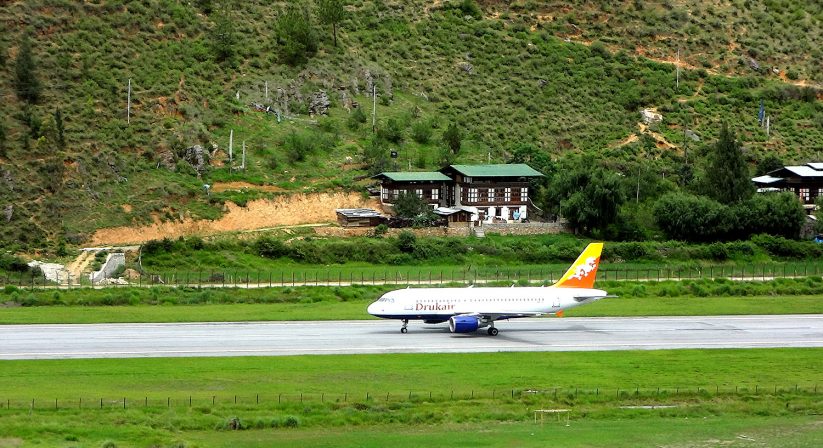



PUNAKHA WINTER TREK


11 days
10 nights
GRADE Easy
PUNAKHA WINTER

PUNAKHA WINTER TREK

PUNAKHA WINTER TREK
Seasons: The trek is pleasant and not difficult over low altitude hills from Dechenchholing to Punakha, and so winter season is suitable for this trek.
Day 01: Arrive Paro International Airport
The flight to Paro will offer a life time experience trip-you can see a spectacular sight of Mount Everest, Kanchenjunga, Makalu and other peaks in Bhutan such as the Chomolhari, Jichu Drake and Tsrim Gang. Upon arrival, our guide will receive and escort you to the hotel for check – in & Lunch. Afternoon free or sight seeing.
Day 02: Paro – Sightseeing

Drive northwest to Drugyal Dzong (1646)-a ruined fortress – 16 kms away from the Paro Town. The dzong has historical signifance as it was built by Zhabdrung Ngawang Namgyal to commemorate the victory of Bhutan against the Tibetans invaders. On a clear day, the peak of Chomolhari “Mountain of the Goddess”, alt. 7329 m (24,029 ft) is visible. On the way back, visit a typical Bhutanese farm house. After lunch at the hotel, visit Kyichu Lhakhang, the oldest temple built by first king of Tibet, Songsten Gembo; visit Ta Dzong built as watch tower for Paro Dzong now converted to National Mesuem. Walk down to Rinpung Dzong (Paro Dzong) meaning ‘Fortress of the heap of Jewels”. Overnight stay at the hotel in Paro.
Day 03: Paro – Thimphu
Head to Thimphu the capital city of Bhutan. The drive will take less than 2 hours. On the way back, pause briefly to admire the oldest fortress in Bhutan, the Simtokha Dzong (built in 1627). Check in at the hotel. After lunch, visit the National Memorial stupa of Third King, built in 1974; visit Tashichhodzong, the seat of the Royal Government and the winter residence of the Head Abbot and the central monastic school. Overnight at hotel in Thimphu.
Day 04: Thimphu – Sightseeing

Visit Simtokha Dzong, which is one of the oldest fortresses in Bhutan. It was built in 1629 A.D and presently houses the largest monastic school in the country. In the afternoon, visit the Institute of Zorig Chusum (the Painting School), where students learn the 13 traditional arts and crafts of Bhutan, visit the Indigenous Hospital, where traditional medicine (outside only) is still practiced. If time permits, visit the Handicraft Emporium where Bhutanese textiles and other arts are displayed and can be purchased. Evening free to stroll around Thimphu valley and its town. Overnight in hotel.
Day 05: Thimphu – DopShing Pang (trek starts) 17km, 5-6 hours
Drive north up the valley towards Dechenchholing Palace, upto Pangrizam, the last motor point, passing through Kabesa village en route to Shong Pang where the trek begins. The trek trail starts gradual climb to Sinchu-la (3,200m). On clear day, you can see Phajoding monastery from the pass. After about 2 km walk, you can see Thinleygang village, Talo monastery and the road to Bhutan’s old capital, Punakha. The trail leads downward gradually from the pass until you reach your overnight campsite at 2,800m.
Day 06: Dopshing Pang – Chorten Ningpo 18km, 6-7 hours

The trek to Chorten Ningpo is gradual descends passing through thick forest, villages, and rice fields till you reach your campsite at 2,700m.
Day 07: Chorten Ningpo – Kabesa/Punakha 5km, 1 hour
The trek trail leads you through villages for almost an hour till reach the motor road, where our transport awaits to transfer you to Punakha. At about 7 km, out of Punakha, visit Chorten Khamsum Yuelley Namgyal, located on a top of a hill across the river. It was sanctified in Dec. 1999 and dedicated to Bhutan’s protective deity Mahakala, houses exceptionally fine sculptures and mural paintings. Overnight stay at the hotel in Punakha.
Day 08: Punakha - Limukha 15km, 5-6 hours

Drive towards Punakha Dzong and then cross the Pho Chu (river). Walk past the rice fields about 15 minutes, with further gradual ascends takes you through scattered chirpine forest for 3 hours and then enter deciduous forest. On the way, enjoy beautiful scenery of Punakha valley and Dzong, and if the weather is favourable you can see some of the snow-capped mountain peaks to the north. Walk near to Limukha village to camp for the night (2,250m).
Day 09: Limukha – Chungsaka/Wangdiphodrang 15km, 5-6 hours
The trek trail rises gradually up through the dense forest of oak and rhododendrons then descend gradually through thick forest to which leads to a small monastery dedicated to Drukpa Kuenley (popularly known as the Divine Madman). From Chungsakha you view the across Samtengang valley. Walk downhill till you reach the motor road and then drive for about half an hour to Wangdiphodrang. Overnight stay at hotel in Wangdiphodrang.
Day 10: Wangdiphodrang/Punakha-Paro

After breakfast, visit Wangdue Dzong (1638)-believed to be constructed on the back of the giant Elephants back and is considered one of the most important Dzongs of the 17th century as it strategically located to controls the west - East and to the South. Visitors may attend the Wangduephodrang Tsechu, an attractive festival held at the dzong in autumn each year.
After leaving Wangdue, make a hike to the Chimi Lhakhang built by Lam Drukpa Kuenley famously known as Divine Mad Man-known to have taught the teachings of Buddhism in outrageous and comical manner so as to capture people attention and simplified manner for layperson to remember. The Bhutanese considers it the land of fertility. If a couple has failed to conceive a child, they could come here to pray and be blessed by a child depending upon ones faith and belief- whether by coincidence or not, it is said that many couple prayers have been answered. People also visit the place to get name for their child. Drive to Paro. Overnight Paro.
Day 11: Departure from Paro International airport.
Depart early after breakfast, where our guide will drop you to Paro air port.









